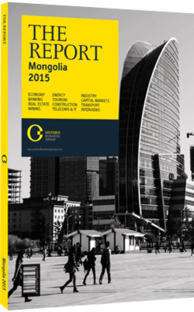Ts. Jadambaa, Chairman, the Information Technology, Post and Telecommunications Authority (ITPTA): Interview

Interview: Ts. Jadambaa
What are the ITPTA’s goals for the further development of Mongolia’s ICT sector?
TS. JADAMBAA: Over the past two years, the ITPTA has been working on completing seven primary goals for the sector: launching a national satellite programme, building an effective e-government services platform, ensuring adequate internet connectivity, changing from analogue to digital broadcasting for both radio and television, creating more highly paid technology jobs, developing internationally acceptable e-products and revamping postal services. While we have made considerable headway in some of these areas, others continue to be works in progress.
How is the ITPTA working to expand e-government services, and what impact have these changes had on ordinary Mongolians?
JADAMBAA: Through the E-Government Project we have installed ATM-like machines – 80 so far in Ulaanbaatar and one in each provincial centre, with many more to come – that allow citizens to access all types of government services using just their fingerprints. Through the centralisation of data from across ministries and agencies, we are able to deliver services much more quickly and at less of a cost. At the moment citizens can make a number of enquiries about various issues on the platform, including personal credit and debt levels, Customs information, real estate holdings, board regulations, national identification acquisition, residential addresses, marital statuses, lost identification cards, legal entity registrations, tax submissions, truck permissions, mineral license applications, electricity and utility bills, newspaper subscriptions, and submissions of complaints and proposals for government entities.
More than 485800 people have already used the system, which has only been in service since June 2013. It greatly reduces the amount of time and effort needed to submit these sorts of requests. A recent cost savings analysis performed by the World Bank, based on how long and costly such requests previously were, estimates that ordinary citizens have already saved MNT5bn ($3m) since the system’s implementation, which is an impressive figure given that it has only cost roughly MNT2.2bn ($1.3m) thus far. Further plans are in the works to move a number of services online using e-signature technology, including allowing people to pay their traffic tickets via the internet.
What actions are being taken in order to increase internet penetration in rural areas?
JADAMBAA: Internet in rural areas is still prohibitively expensive and not widely accessible enough. Our goal is to make it twice as fast and twice as cheap for people living in these areas. To accomplish this we are cooperating with infrastructure development companies and using the support of the Universal Service Obligation Fund to build the country’s fibre-optic network capacity. We have already reached 40% of our target in terms of additional connectivity. Since June 2014, 150 districts have upgraded their infrastructure, but 26 are still without connections and rely primarily on satellite uplinks. Over the next year, six more districts will be connected, with the remainder to follow.
Expanding fibre-optic connections for internet users goes hand-in-hand with increasing access to mobile 3G services. Only 30% of current mobile subscribers use data, with much lower usage in the countryside than in cities. This needs to change. Part of the problem has to do with network infrastructure and part of it has to do with the relatively high cost of end terminals, or smartphones.
As such, we are offering support to companies that are able to provide more affordable terminals, as well as those that are refurbishing old smartphones to resell at lower prices. ITZ one, for instance, has begun offering a smartphone for MNT180,000 ($108), which is much cheaper than branded devices.
You have reached the limit of premium articles you can view for free.
Choose from the options below to purchase print or digital editions of our Reports. You can also purchase a website subscription giving you unlimited access to all of our Reports online for 12 months.
If you have already purchased this Report or have a website subscription, please login to continue.

